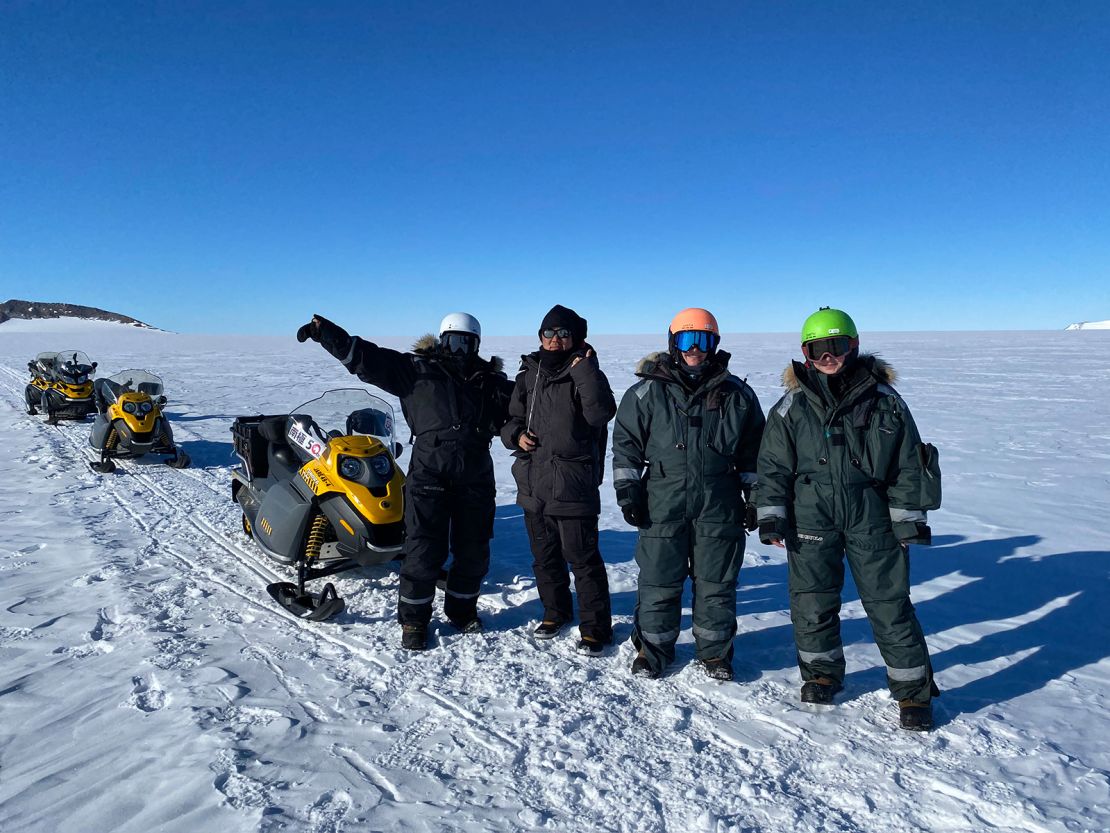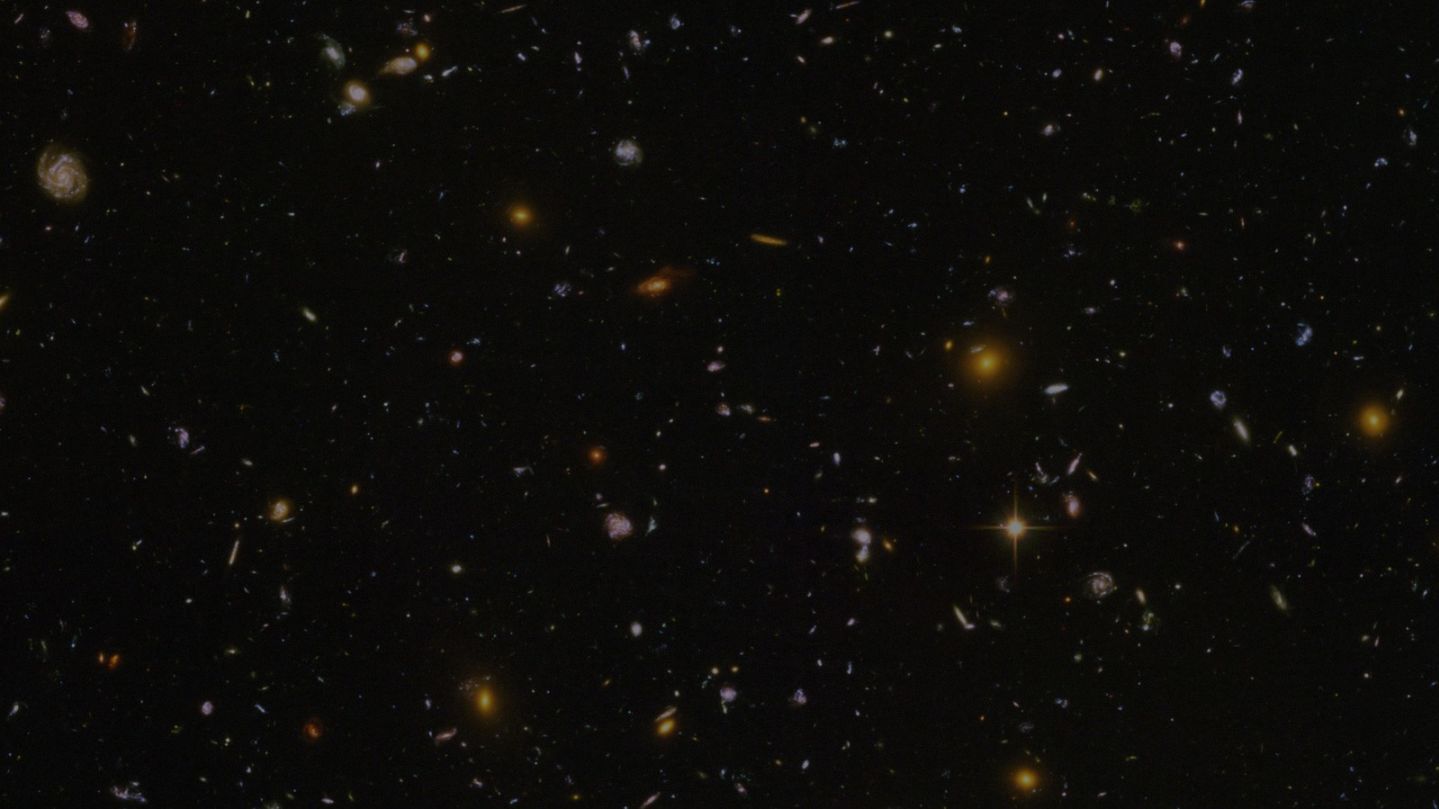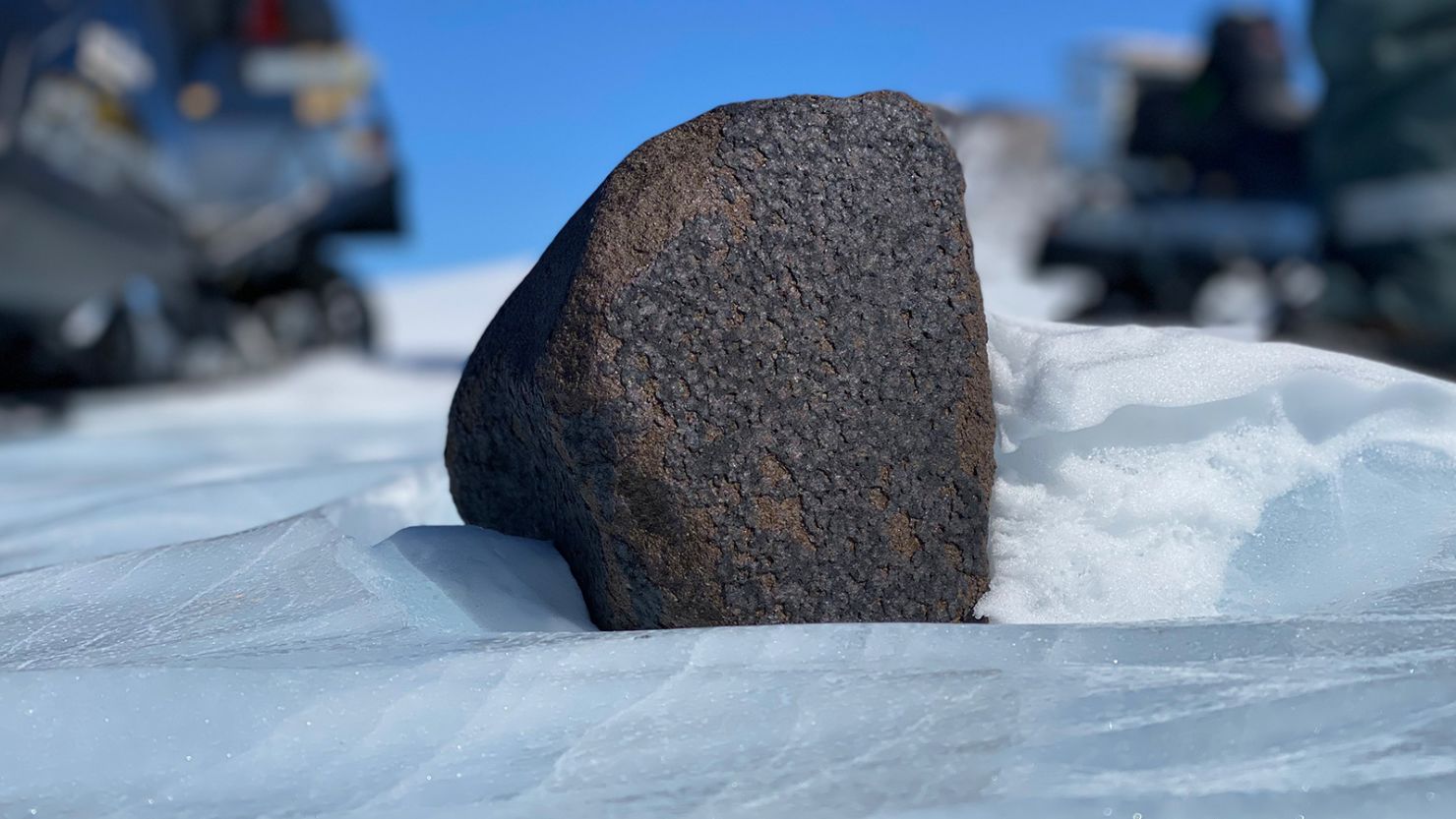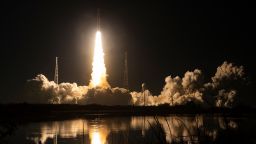Sign up for CNN’s Wonder Theory science newsletter. Explore the universe with news on fascinating discoveries, scientific advancements and more.
During a recent excursion to the icy plains of Antarctica, an international team of researchers discovered five new meteorites — including one of the largest ever found on the continent.
The rare meteorite is about the size of a cantaloupe but weighs a hefty 17 pounds (7.7 kilograms). The specimen is one of only about 100 that size or larger discovered in Antarctica, a prime meteroite-hunting location where more than 45,000 space rocks have been tracked down.
Now, the exceptional find is heading to the Royal Belgian Institute of Natural Sciences in Brussels, where it will be studied. And Maria Valdes, a research scientist at Chicago’s Field Museum of Natural History and the University of Chicago who was part of the expedition team, has kept some of the material for her own analysis.
Valdes’ area of focus is cosmochemistry. That “broadly means that we use meteorites to study the origin and evolution of the solar system through chemical methods,” she told CNN. She’ll take her samples and use strong acids to dissolve them before using a process called calibrated chemistry to isolate various elements that make up the rock.
“Then I can start to think about the origin of this rock, how it evolved over time, what kind of parent body it came from, and where in the solar system that parent body formed,” Valdes said. “Those are kind of the big questions that we try to address.”
On the hunt
Meteorites strike Earth evenly across its surface, so Antarctica is not home to a disproportionately large concentration of them, Valdes noted. But the pure white ice is an ideal backdrop for spotting the jet black rocks.
Hunting for meteroids is “really low tech and less complicated than people might think,” Valdes said. “We’re either walking around or driving on a snowmobile, looking on the surface.”

But the team did have an idea of where to look. A January 2022 study used satellite data to help narrow down locations where meteorites were most likely to be found.
“Meteorites themselves are too small to detect from space with satellites,” Valdes explained. “But this study used satellite measurements of surface temperature, surface slope, surface velocity, ice thickness — things like this. And it plugged (the data) into a machine learning algorithm to tell us where the highest probabilities of finding meteorite accumulation zones are.”
Distinguishing a meteorite from other rocks can be a tricky process, Valdes said. Researchers look for fusion crust, a glassy coating that forms as the cosmic object plummets through the Earth’s atmosphere.
“A lot of rocks can seem like they’re meteorites, but they’re not,” she said. “We call these meteor-wrongs.”
Another distinguishing characteristic is the potential specimen’s weight. A meteorite will be much heavier for its size than a typical Earth rock because it’s packed with dense metals.
The conditions the researchers endured were grueling. Though Valdes and three other scientists carried out their mission during the continent’s “summer,” which offered 24 hours of daylight, temperatures still hovered around 14 degrees Fahrenheit (minus 10 degrees Celsius), according to a news release from the Field Museum.
The research team spent about a week and a half with a polar field guide, living in tents pitched on the icy terrain. However, Valdes said she and her colleagues also spent time at a Belgian research station near Antarctica’s coast, where they enjoyed warm, cheesy foods, such as fondue.
When it comes to future research, the good news, Valdes added, is that the five meteorites she and her colleagues discovered on this expedition are just the tip of the iceberg.
“I’m eager to go back there, for sure,” she said. “Based on the satellite study, there are 300,000 meteorites, at least, waiting to still be collected in Antarctica. And the larger the (number of) samples that we have, the better we can understand our solar system.”
The excursion was led by Vinciane Debaille, a professor at the Université Libre de Bruxelles in Brussels. She and Valdes were joined by Maria Schönbächler, a professor at Eidgenössische Technische Hochschule Zurich, and doctoral student Ryoga Maeda of Vrije Universiteit Brussel and the Université Libre de Bruxelles.




![This image by the NASA/ESA/CSA James Webb Space Telescope's Near-InfraRed Camera (NIRCam) features the central region of the Chameleon I dark molecular cloud, which resides 630 light years away. The cold, wispy cloud material (blue, centre) is illuminated in the infrared by the glow of the young, outflowing protostar Ced 110 IRS 4 (orange, upper left). The light from numerous background stars, seen as orange dots behind the cloud, can be used to detect ices in the cloud, which absorb the starlight passing through them. An international team of astronomers has reported the discovery of diverse ices in the darkest, coldest regions of a molecular cloud measured to date by studying this region. This result allows astronomers to examine the simple icy molecules that will be incorporated into future exoplanets, while opening a new window on the origin of more complex molecules that are the first step in the creation of the building blocks of life. [Image Description: A large, dark cloud is contained within the frame. In its top half it is textured like smoke and has wispy gaps, while at the bottom and at the sides it fades gradually out of view. On the left are several orange stars: three each with six large spikes, and one behind the cloud which colours it pale blue and orange. Many tiny stars are visible, and the background is black.]](https://media.cnn.com/api/v1/images/stellar/prod/230123113224-james-webb-space-telescope-chameleon-i-dark-molecular-cloud.jpg?c=16x9&q=h_144,w_256,c_fill)
